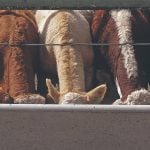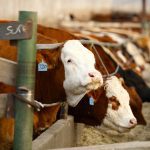For the week ending May 10, Western Canadian feeder cattle markets traded steady to $5 higher on average. Quality packages of lighter calves were priced $10-$15 above week ago levels. Many auction barns are only holding sales every two or three weeks at this time of year with limited numbers on offer. This made the market hard to define in certain weight categories.














